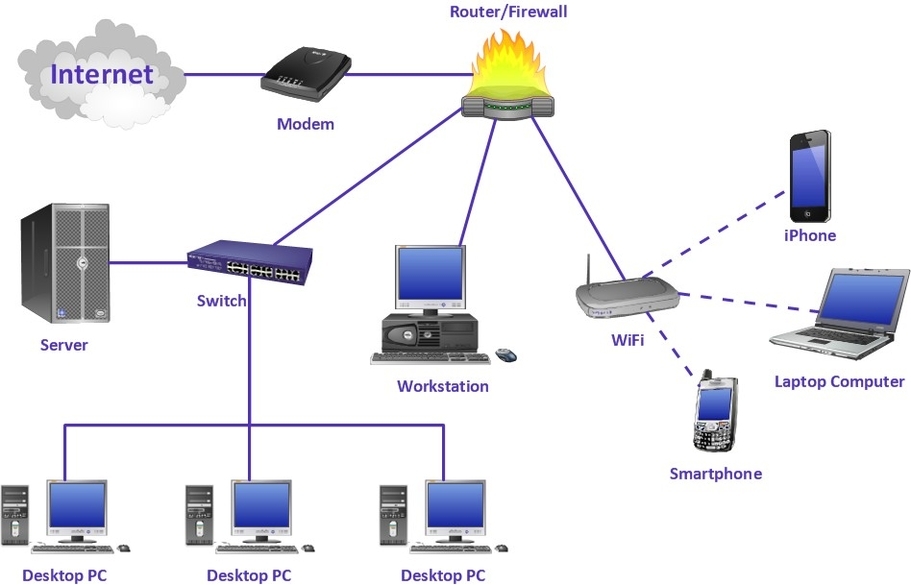
Computer network system design is the process of creating a blueprint for the physical, virtual, and logical arrangement of infrastructure in an IT network. The design process involves the creation of a visual representation of the network, which integrates information such as physical connections, quantity, type, and location of all devices and endpoints, IP addressing, and security processes and architecture . Network design software can help by creating a site or office plan to map physical connections .
The design process begins with assembling a list of all the assets, endpoints, users, devices, LANs, and other network elements . IT teams enter this information in the network design application to create the first iteration of a network diagram. When designing for existing network environments, the process integrates existing infrastructure that must be maintained or kept running during production and deployment of the new network. Existing use patterns and workflows can inform the new network hierarchies and topologies, which will evolve as security, product, and user experience teams collaborate on the design .
Designing networks that perform critical business functions needs to be a well-thought-out processnot one that is thrown together. Devoting appropriate time and resources to the design process will result in a network that is cost-effective, easy to manage, and ready to grow . Network security should be built in during the early design stages, not bolted on later. If security is not factored into the design, incompatible security tools can affect network performance, user experience, and manageability . This process begins with creating a list of the resilience challenges that an organization facessuch as security incidents, network issues, or a sudden need to update applications or scale up or down. IT teams can use these scenarios to test the network design’s ability to respond and adjust . Assess what sort of scaling the organization is likely to do, such as steadily adding customers or rapid upscaling and downscaling services to accommodate specific workflows .
There are several types of network topology, including bus, ring, star, and mesh . A bus network topology is when every network node is directly connected to a main cable. In a ring topology, nodes are connected in a loop, so each device has exactly two neighbors. Adjacent pairs are connected by point-to-point links. In a star topology, each node is connected to a central hub. In a mesh topology, each node is connected to every other node .
In conclusion, computer network system design is a crucial process that involves the physical, virtual, and logical arrangement of infrastructure in an IT network. The design process begins with assembling a list of all the assets, endpoints, users, devices, LANs, and other network elements. Devoting appropriate time and resources to the design process will result in a network that is cost-effective, easy to manage, and ready to grow. Network security should be built in during the early design stages, not bolted on later. There are several types of network topology, including bus, ring, star, and mesh .
